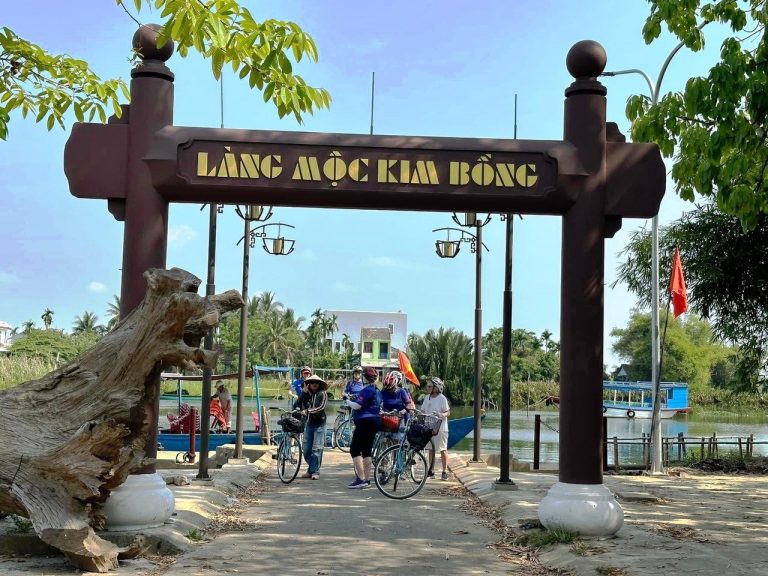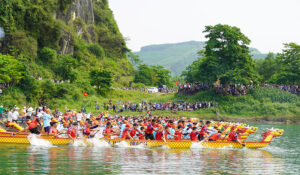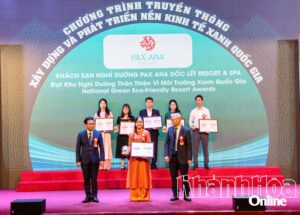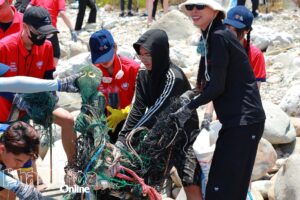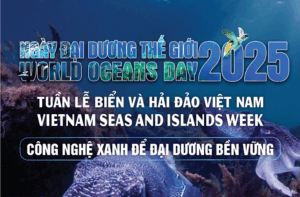Dong Van stone plateau is well-known for its lack of water resources. Geographer Vu Cao Minh from the Geography Institute, who has spent many years conducting research in the area, talks about the area’s potential for tourism.
Is there anything unique about Dong Van stone plateau?
Dong Van stone plateau is about 150km from the northern mountain province town of Ha Giang. It is the first geological park in Viet Nam, and it has remained untouched for hundreds of millions of years with mammoth rocks spreading over four districts – Quan Ba, Yen Minh, Meo Vac and Dong Van.
It is well-known for various shapes of karst stone with different characteristics, especially types of karst pyramids. Caves and rocky gardens attract thousands of visitors to the area.
Nho Que River runs down the massive Ma Pi Leng Mountain, with a terrifying drop to the breathtaking 1,335m – deep Nho Que Chasm. It is very suitable for adventure tourism.
The area has been surveyed by Vietnamese scientists and specialists from Russia, Poland, Japan, Belgium, and Germany. About 40 heritage areas have been found with valuable evidence about the Earth’s evolution, rock formations, caves, valleys and other features.
The plateau is made up of at least 80 per cent limestone and has fossils of thousands of species of ancient creatures from 400-600 million years ago.
It is also home to several cultures that sprung up over the centuries. The 574sq.km plateau now has about 250,000 people belonging to 22 ethnic groups including Mong, Tay, Nung, Han, Lo Lo, Hoa, Dao and Pu Peo.
They live along the rocky highlands, using small caves and stone holes for cultivation. The groups sell local specialties such as minty honey and chickens on the roadside.
The area does not only provide geologists with a glimpse into the Earth’s past but also boosts tourism, helping eliminate poverty in the area.
Where did the initiative to establish a geo-park in the province come from?
My colleagues and I have done research here for dozens of years. Dong Van is famous for karst stone but also its lack of water. We went there to look for water resources and find ways to prevent flash flooding and landslides. Besides we discovered that this area is actually a good destination for visitors.
Local residents were very poor. In talks with local authorities, we always discussed ways of making life better.
One person joked that the only thing here worth selling was the stone. I said that wasn’t such a good idea, as the stone that dominates the landscape has produced a beautiful environment hardly seen anywhere else in the world.
Although the rocky landscape has hampered agriculture, it offers big potential for tourism, something that will hopefully boost the local economy.
Local authorities asked us to help them develop a tourism development project in Ha Giang through its geopark.
There is a series of unique areas including the Sang Tung stone desert, Lung Pu animal sanctuary, stone fields at Van Chai, the Khau Vai flower fields and Sa Phin forest. And there are rows of dragon scale and lion shaped karsts.
There are also razor sharp karst mountains, which we nickname one-stork-leg peaks because they’re so thin on their summit that even a stork wouldn’t be able to use two feet. In particular, the 1,000m chasm next to Nho Que River is pretty unique, and can only be found in a few limestone areas worldwide. This area was researched by the French in the past and they called Ma Pi Leng a natural wonder.
At several recent conferences, you warned of the danger of destroying the geological heritage in the plateau. Are local people aware of this site?
Local residents have lived here from generation to generation. Stone seems to be something acquainted with their daily living.
They use stone to build walls round their houses and the edges of terraced paddy fields. One special characteristic of terraced fields is that water runs from a high to low area. They use stones to build walls to keep water for the paddy.
The sight of a house with stone walls and stone edge of field is unique to the locality. However, there is no planning and regulations to protect the area while local people lack awareness, leading to the fact that many heritage areas, which have been created by nature over millions of years, even hundreds of millions of years, are being seriously damaged.
Along the road, I saw many mountains that have been exploited by local residents. The damage will greatly affect the beauty of the area and tourism development.
We need to preserve and protect it for the future.
You said there are many ethnic groups living there. Will they be able to preserve their traditional lifestyle with increasing numbers of visitors?
If Sa Pa is seen as the pearl of Lao Cai, Dong Van stone plateau should be seen as Ha Giang’s Sa Pa. The difference is that the plateau has not been exploited much. Local living has yet to be effected by modernisation.
I have no exact number of visitors to the plateau this year but I am sure that it is increasing. At present, local residents haven’t changed their lifestyles. They are still themselves.
The local residents and their lifestyle are a special thing that attracts visitors. Their life is very simple. The main roads are distant from their houses and they have to take shortcuts over paddy fields or mountains and valleys. The things they enjoy most are the fairs, festivals and love markets.
Men are always dressed in dark colours, while women wear colourful brocade. The fairs sell many kinds of goods for local residents. And there are also local specialties such as men men (cake made of maize), bee larva, minty honey and maize wine.
How to preserve and protect the heritage?
I think that local residents cannot cultivate rice in such a rocky environment but tourism can improve their living standards. However, if their living standards are improved by tourism, they won’t preserve their heritage.
Forming and developing Dong Van Geopark is a new attempt to develop the socio-economic situation in four districts.
Since establishing the geopark, it is necessary to pay much importance to investing in infrastructure including a signboard system. At the same time, they need to develop tours and begin new crafts such as carving and casting stone products.
Last but not least, they need to train groups of professional tourist guides with good foreign language skills. Plus it is necessary to maintain traditional ethnic minority festivals and open shops selling locally produced goods.
If a forest is burnt, people can re-plant it. If a house collapses, people can re-build it. However, with stone, if it is damaged, it is lost forever.


